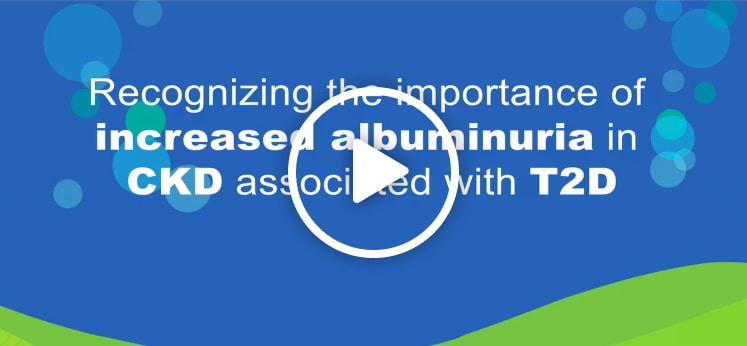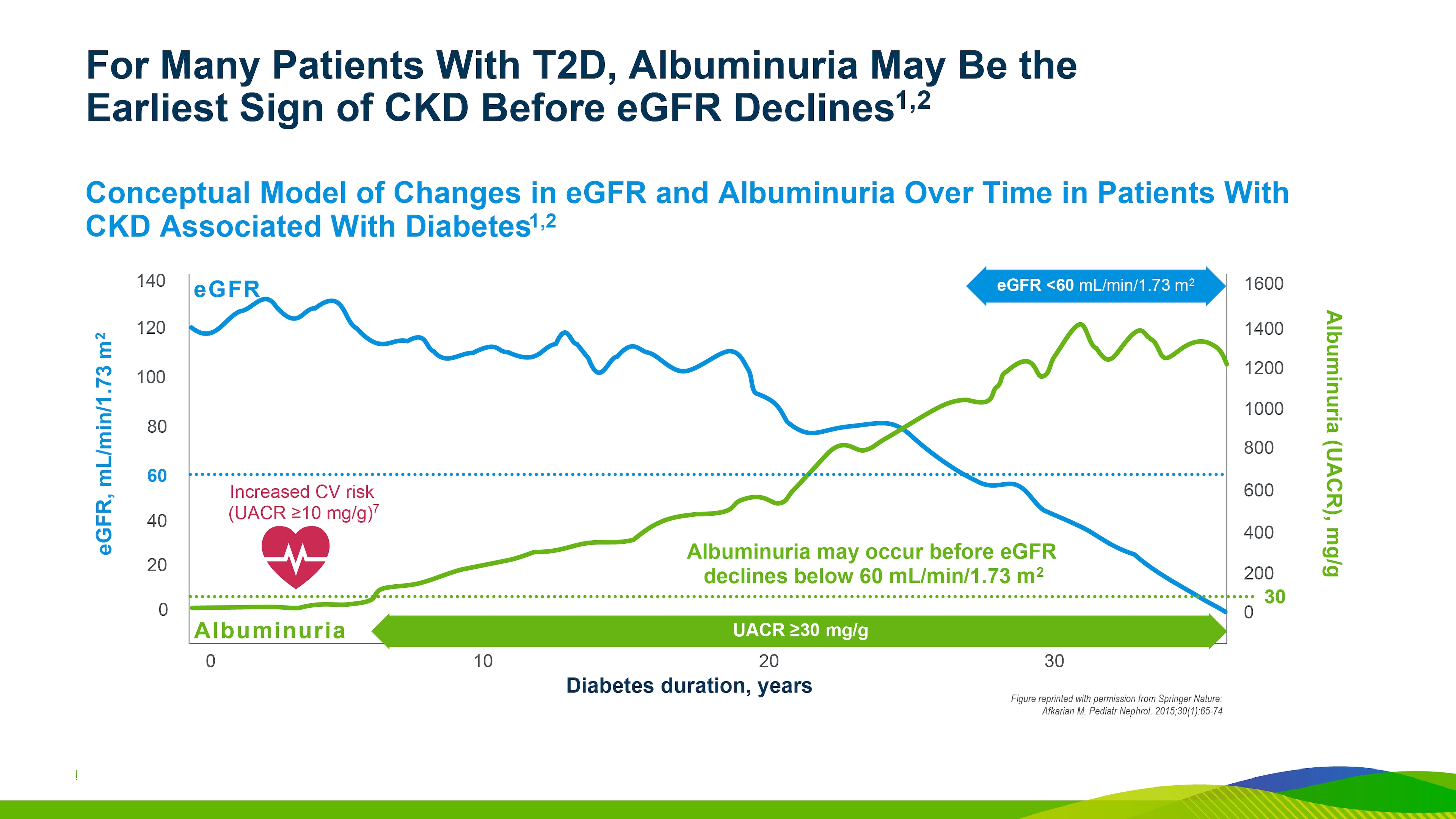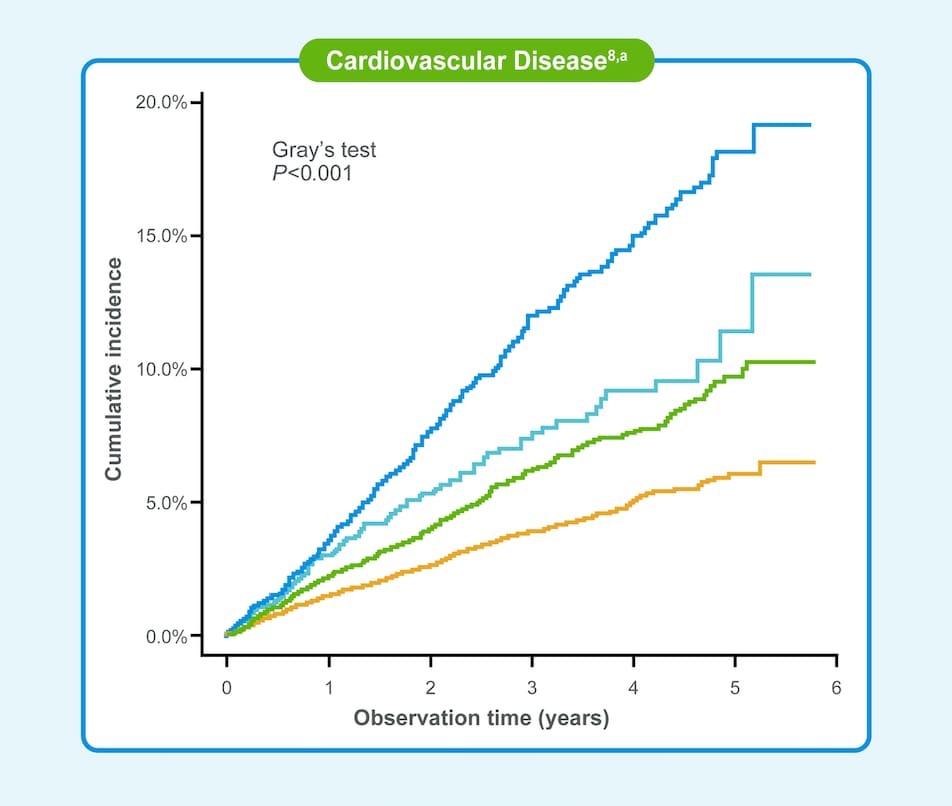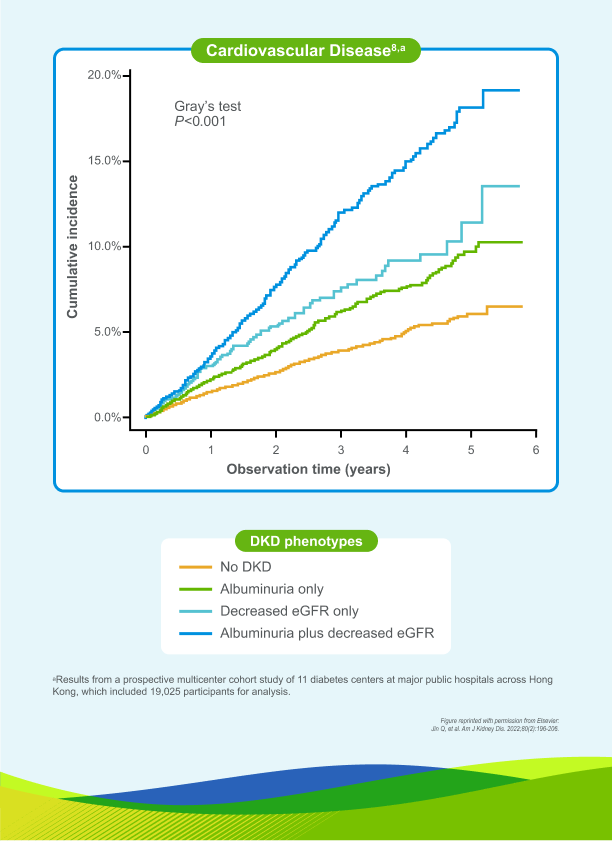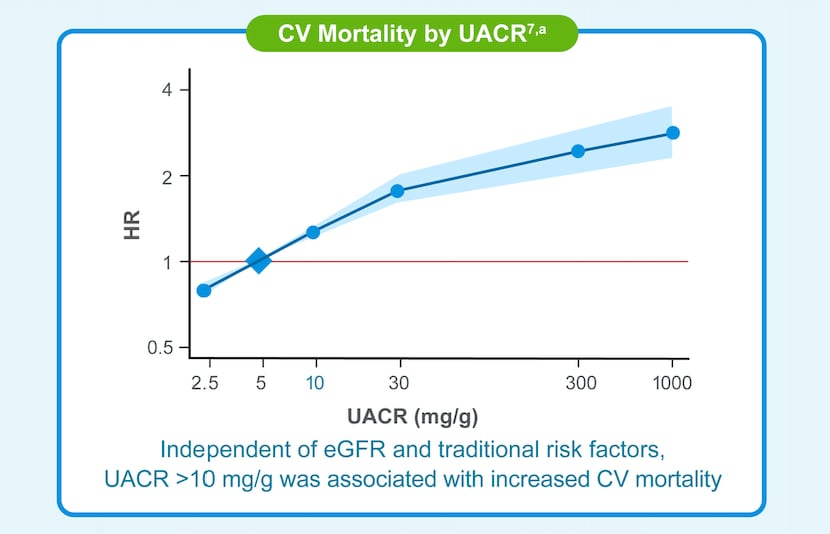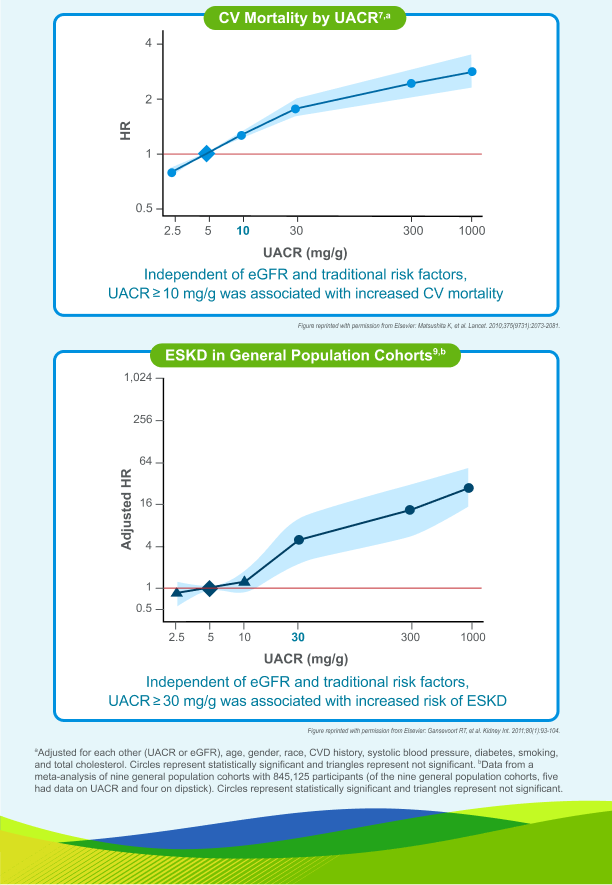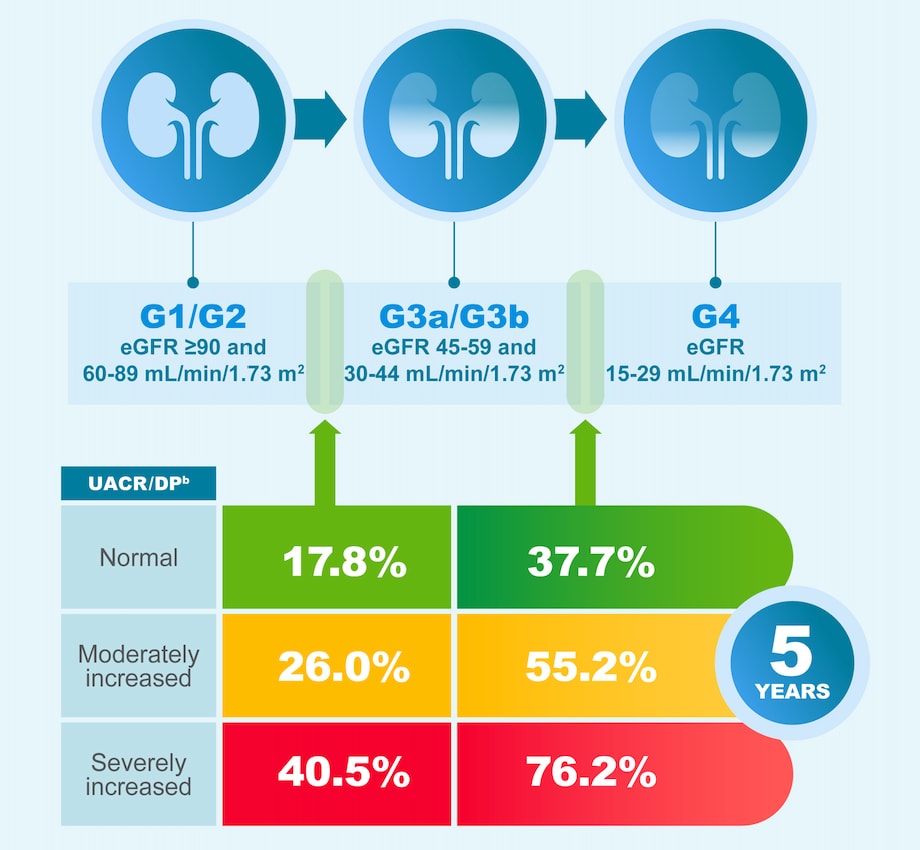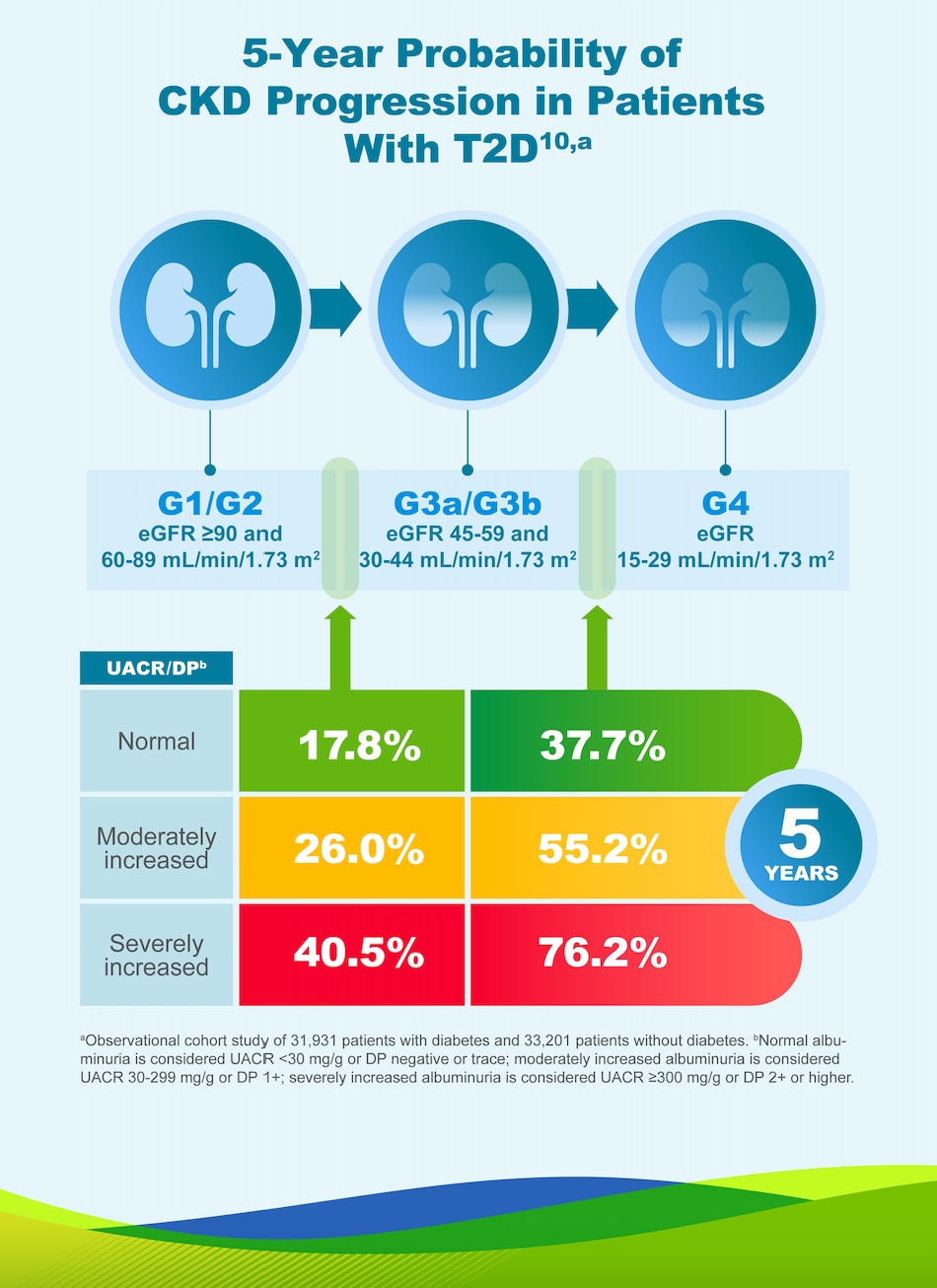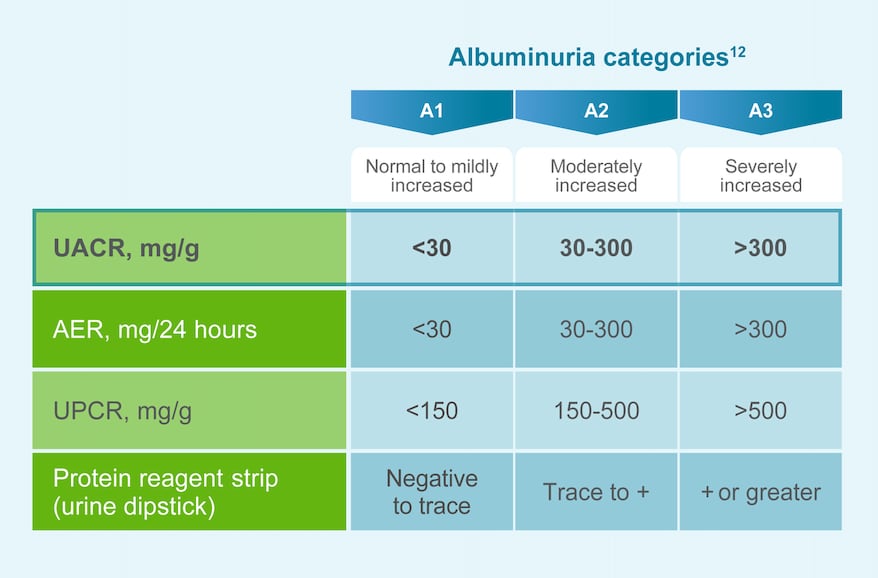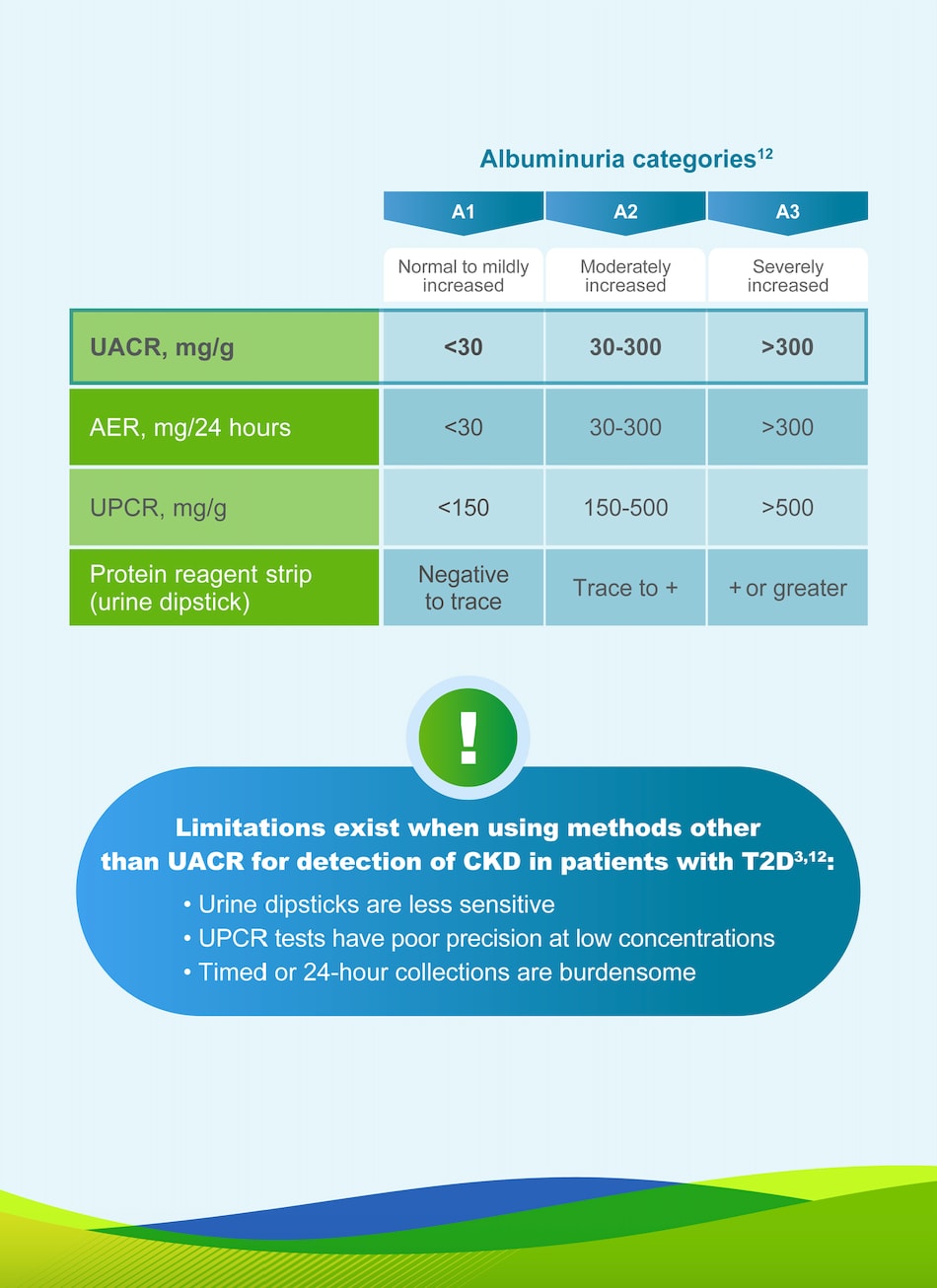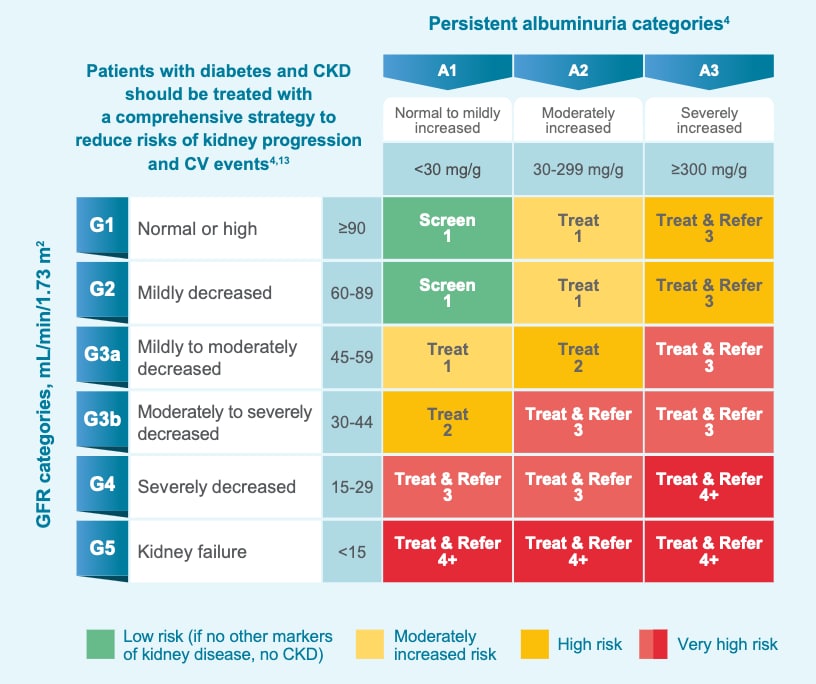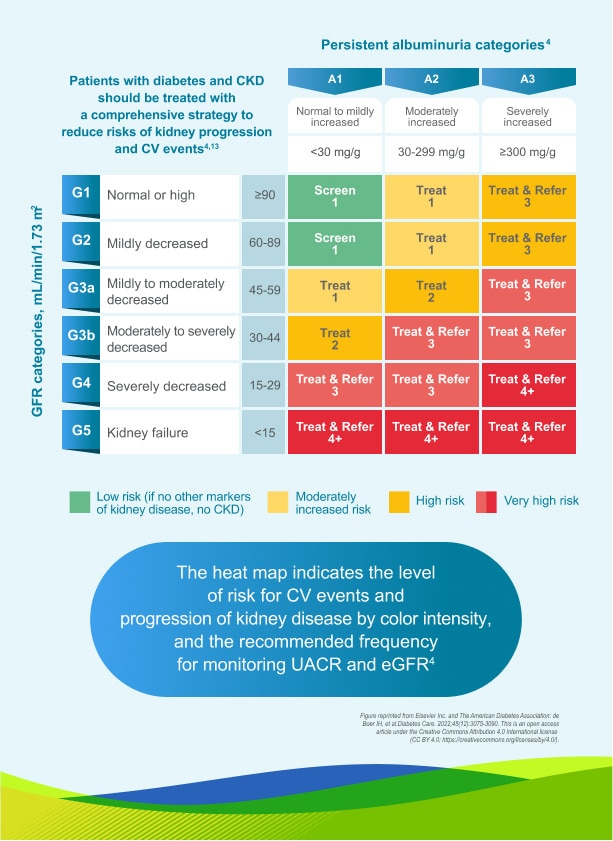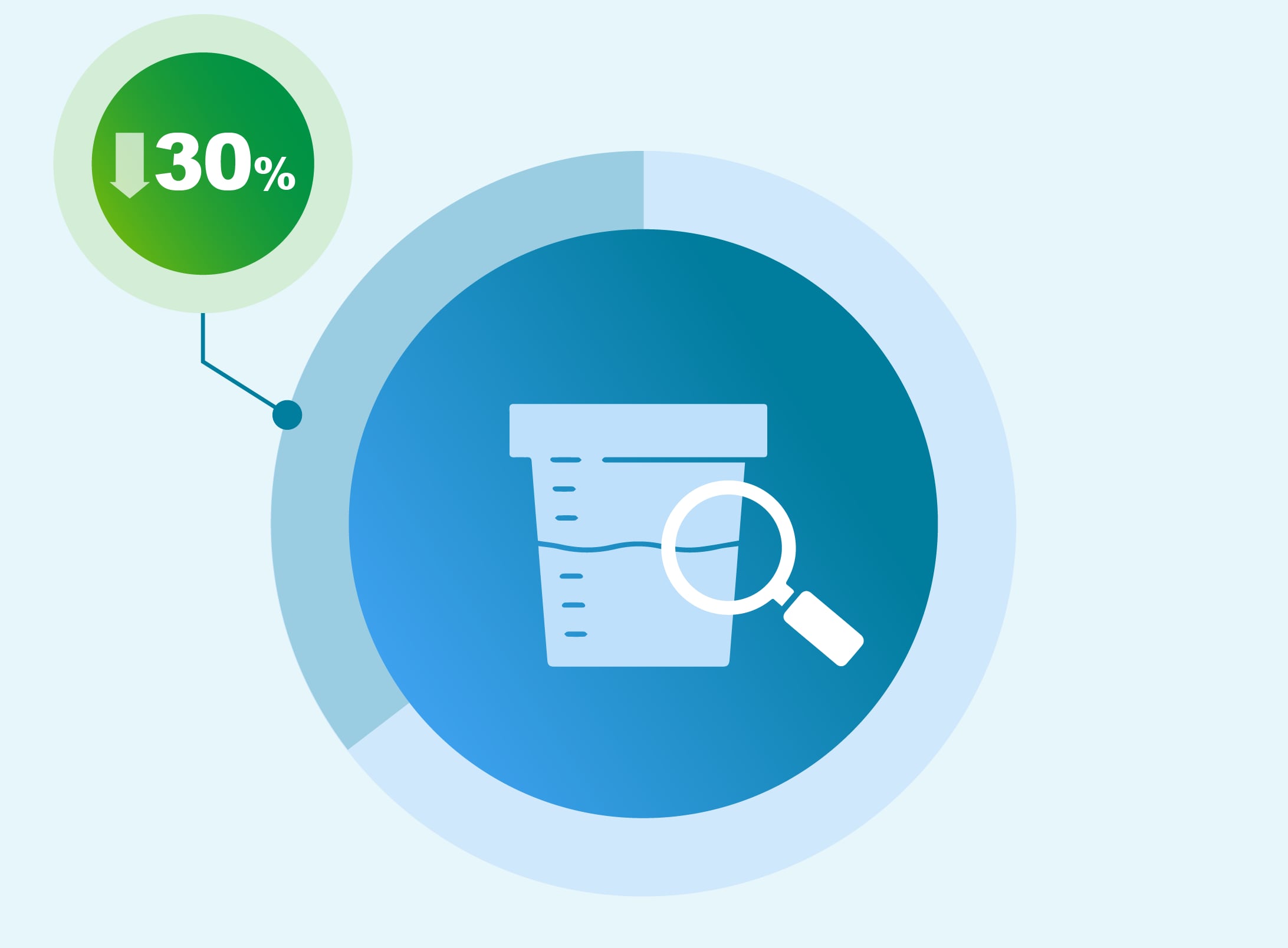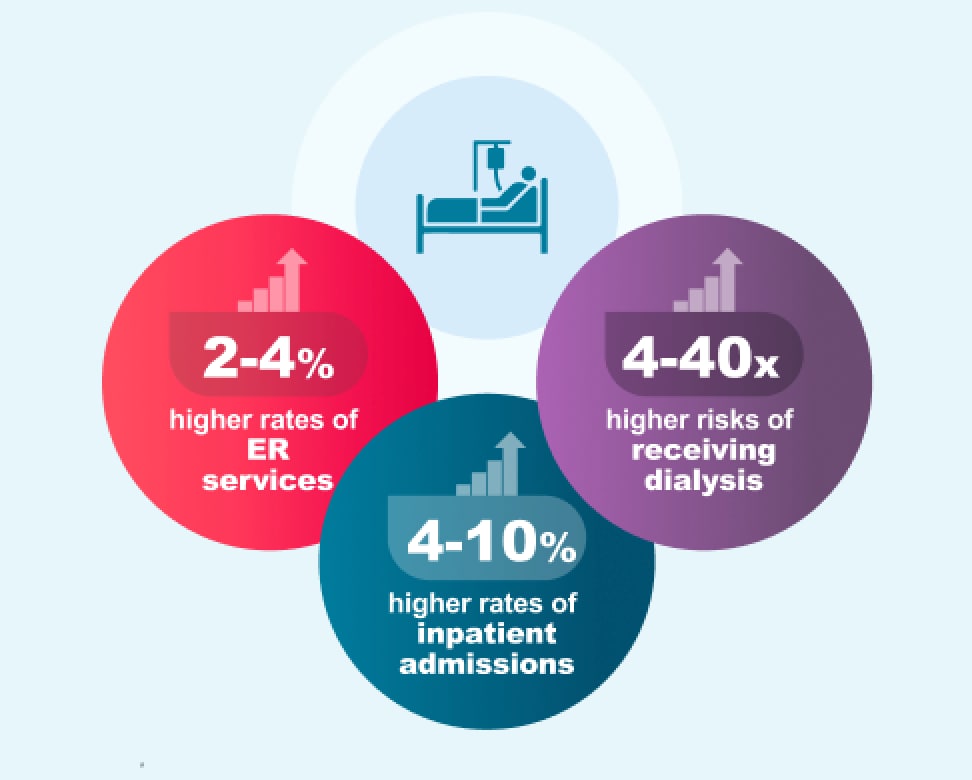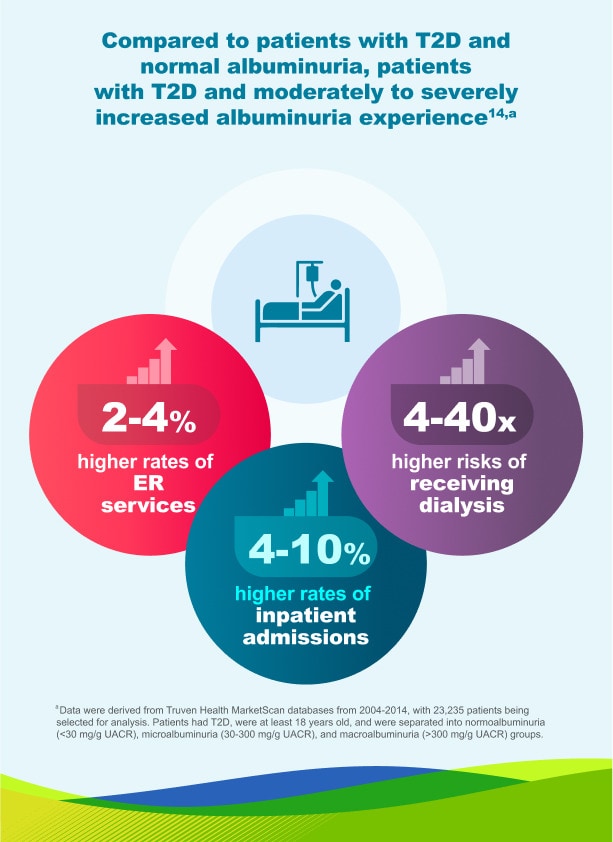CKD Associated With T2D
Understanding Albuminuria
Understanding Albuminuria
Albuminuria is a crucial component of early identification and diagnosis of CKD associated with T2D.3
Clinical Diagnosis of CKD in a patient with T2D
Albuminuria is associated with increased risk of CV events and CKD progression.7-10
Both UACR and eGFR should be used to guide CKD identification, monitoring, and appropriate management.4
Guidelines recommend UACR to test for albuminuria in addition to eGFR at least annually in all patients with T2D starting at diagnosis3-5,11


Increased albuminuria in patients with T2D burdens both the patient and the healthcare system.14,15

Abbreviations
AACE, American Association of Clinical Endocrinology; ADA, American Diabetes Association; AER, albumin excretion rate; CI, confidence interval; CKD, chronic kidney disease; CV, cardiovascular; CVD, cardiovascular disease; DKD, diabetic kidney disease; DP, dipstick proteinuria; eGFR, estimated glomerular filtration rate; ER, emergency room; ESKD, end-stage kidney disease; GFR, glomerular filtration rate; HF, heart failure; HR, hazard ratio; KDIGO, Kidney Disease Improving Global Outcomes; T2D, type 2 diabetes; UACR, urine albumin-to-creatinine ratio; UAE, urine albumin excretion; UPCR, urine protein-to-creatinine ratio.
References
1. Afkarian M. Pediatr Nephrol. 2015;30(1):65-74. 2. Pugliese G. Acta Diabetol. 2014;51(6):905-915. 3. American Diabetes Association. Section 11. Diabetes Care. 2025;48(Suppl 1):S239-S251. 4. de Boer IH, et al. Consensus report. Diabetes Care. 2022;45(12):3075-3090. 5. Kidney Disease Improving Global Outcomes. Kidney International. 2024;105(Suppl 4S):S117-S314. 6. Looker HC, et al. J Am Soc Nephrol. 2019;30(6):1049-1059. 7. Matsushita K, et al. Lancet. 2010;375(9731):2073-2081. 8. Jin Q, et al. Am J Kidney Dis. 2022;80(2):196-206. 9. Gansevoort RT, et al. Kidney International. 2011;80(1):93-104. 10. Nichols GA, et al. BMC Nephrology. 2020;21(1):167. 11. Blonde L, et al. Endocr Pract. 2022;28(10):923-1049. 12. Kidney Disease Improving Global Outcomes. Kidney Int Suppl. 2013;3(1):1-150. 13. Shlipak MG, et al. Kidney Int. 2021;99(1):34-47. 14. Zhou Z et al. Diabetes Ther. 2017;8(3):555-571. 15. Vassalotti JA, et al. Am J Manag Care. 2019;25(11):e326-e333.
Keep Exploring
